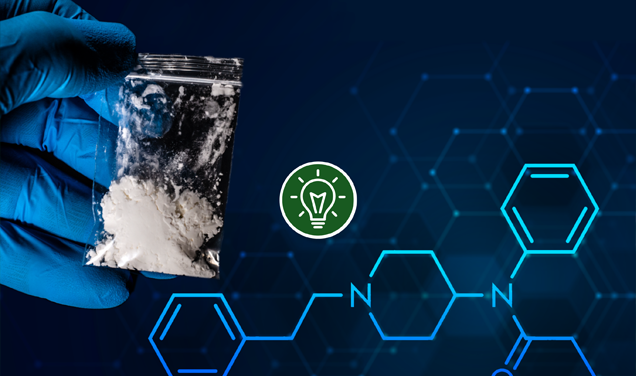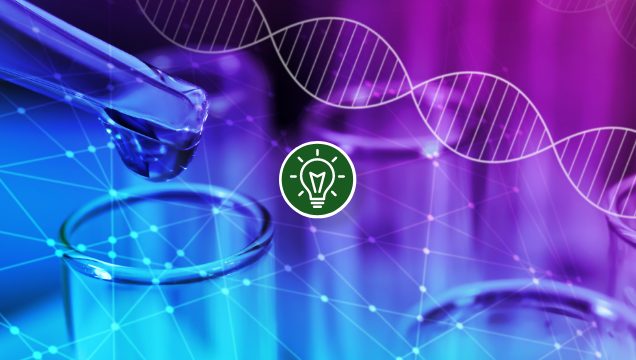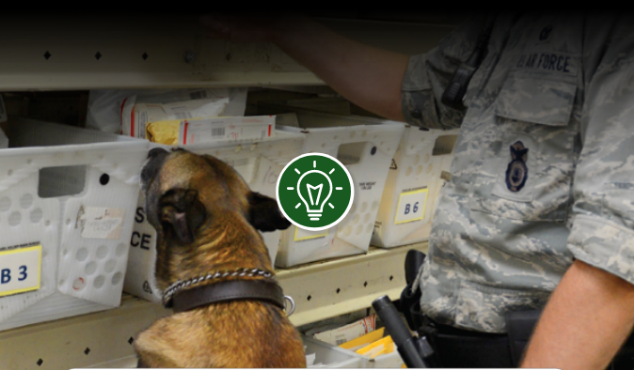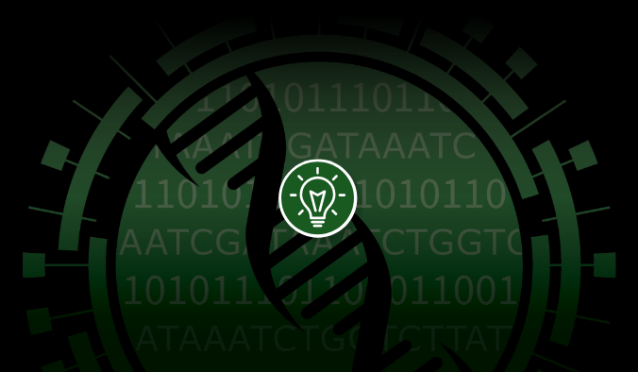Bioinformatics & Genome Sequencing
A SigSci Solution
Universal Detection for Biothreats and Emerging Diseases
The SARS-CoV-2 pandemic illustrated that RNA viruses pose a significant global biothreat. Unfortunately, the detection of RNA viruses can be a major challenge, especially for novel or emerging infectious disease viruses that lack well-established targeted detection assays. Universal or ‘target agnostic’ RNA sequencing and related computational analysis has the potential to overcome these challenges to enable the detection of any virus or pathogen present in a sample. Sequencing approaches continue to advance in speed and accuracy with lower associated costs. MORE
A SigSci Solution
Supporting the Development of Biosecurity Best Practices in a Changing Regulatory Environment
Biotechnology, bioengineering, and biomanufacturing benefit society in many ways, including in agriculture, sustainable food production, healthcare, and pharmaceuticals. Information technologies allow the economical generation of synthetic nucleic acid strands, facilitating the modification of microbes to produce novel compounds. There is some risk that this process could be misused by bad actors or that dangerous microbes might be accidentally generated. While the likelihood of occurrence is low, misuse may have serious consequences. MORE
A SigSci Solution
SeqScreen-Nano: Functional Threat Assessment of Unknown Pathogens and Biothreats
Public health officials and decision makers in the biothreat community must anticipate emerging biological threats by proactively evaluating DNA and RNA sequences. For public health officials deployed to areas of suspected outbreaks, portable nanopore sequencing hardware enables the rapid identification and characterization of biological threats in field operations. Nanopore sequencing also offers a lower initial investment cost, has the potential to report sequence data analysis results in real-time, and can capture more of a microbial genome within a single, long read. MORE
A SigSci Solution
SigSci Bioinformatics Workflows Identify Sequences of Concern and Root Out Potential Biothreats
Uncovering the taxonomic origin and functional profile of gene sequences is of high interest to biosecurity professionals and fundamental researchers, but it is a challenging and nuanced task to navigate. SeqScreen™, an open source bioinformatics workflow, leverages multiple open source tools to predict the most probable source organism, the diversity of possible taxonomic lineages, functional gene annotations, and customized. MORE
A SigSci Solution
Modeling the Transmission of Highly Drug-Resistant Pathogens in Healthcare
The prevalence of healthcare-acquired infections (HAI) and rising levels of antimicrobial resistance places significant economic and public health burdens on modern healthcare systems. A group of highly drug resistant pathogens known as the ESKAPE pathogens, along with C. difficile, are the leading causes of HAIs. Interactions between patients, healthcare workers, and environmental conditions impact disease transmission. MORE
A SigSci Solution
FOCUS: Signature Science Funded Modeling Project to Forecast COVID-19 in the United States
The COVID-19 pandemic has demonstrated the need for timely, data-driven projections of infectious disease activity. Near-term forecasts can provide useful information to public health decision makers. In April 2020, the University of Massachusetts – Amherst partnered with the Centers for Disease Control (CDC) to launch the COVID-19 Forecast Hub. The consortium marshals infectious disease modelers. MORE
A SigSci Solution
skater: An R package for SNP-based Kinship Analysis, Testing, and Evaluation
There are multiple approaches to estimating relatedness between samples, including genome-wide measures and methods that rely on identity by descent (IBD) segment detection. Analyzing results from genome-wide SNP-based kinship analysis or comparing analyses to simulated data for benchmarking have to this point required writing one-off analysis functions… MORE
CBRNE Detection Systems

A SigSci Solution
Focus on Third Party Testing to Support TSA Acquisitions
The Transportation Security Administration (TSA) has an interest in streamlining their acquisition process for new detection technologies. Manufacturers of detection technologies desire to get their products to market as fast as possible while also ensuring that equipment meets the TSA’s detection requirements. External testing (i.e. testing performed by third party providers rather than government-sponsored testing) is a viable pathway to … MORE
A SigSci Solution
When the Air Force Needed Safe Training Aids for their Explosive-Detecting K-9s, TrueScent® Delivered
Canines have served a vital and heroic role in the U.S. armed forces for more than 75 years. As part of their ‘deter and detect’ mission, canines are trained for explosives detection, which places them and their handlers in harm’s way as they conduct patrols. In 2010, the U.S. Air Force Military Working Dog Program sought canine training aids for emerging homemade explosive (HME) threats. TATP and HMTD, extremely dangerous and unstable HMEs … MORE
A SigSci Solution
SpADe (Spore Amplified Detection) Leverages Synthetic Biology to Monitor Underground CBRNE Threats
The Defense Advanced Research Projects Agency (DARPA) BioReporters for Subterranean Surveillance program funded the development of novel biological systems to monitor for underground CBRNE threats. These systems had to be delivered to depth over potentially large areas, be suitably persistent in soil and sensitive to chemical or biological threat agents, be able to generate sufficient signal to enable … MORE
A SigSci Solution
CHEMERA® Meets the Challenge of Detecting Next Generation Chemical Threats — Solid, Liquid, and Vapor
Chemical defense professionals can achieve laboratory-grade field identification with unmatched sensitivity, selectivity and speed with CHEMERA®. Analyzes solid, liquid, or vapor samples. Returns clear “detect/no detect” in just 60 seconds. No need for carrier gasses or columns. Single format sample media. Operable in full PPE or MOPP gear. Ruggedized to perform in the field … MORE
A SigSci Solution
SigSci’s Patented Low SWaP Sampling Technologies Enable Previously “Out of Reach” Collection Scenarios
The Intelligence Advanced Research Projects Activity (IARPA) sponsored the Molecular Analyzer for Efficient Gas-Phase Low-Power Interrogation (MAEGLIN) Program which, in part, funded the development of novel low-SWaP, high-endurance sampling systems. Signature Science’s engineering team, as a performer on the program, developed and delivered a universal pre-concentrator capable of providing >1,000-fold enrichment boluses. There are multiple approaches to estimating relatedness between samples, including genome-wide measures and methods that rely on identity by descent (IBD) segment detection. Analyzing results from genome-wide SNP-based kinship analysis or comparing analyses to simulated data for benchmarking have to this point required writing one-off analysis functions… MORE

A SigSci Solution
FentAlert™: A Field Operator-Friendly Solution for the Rapid and Safe Detection of Fentanyl
In 2021, the Irregular Warfare Technical Support Directorate (IWTSD), on behalf of the Department of Defense, sought a field operator-friendly solution for the rapid detection of fentanyl. At that time, synthetic opioid detection relied upon the use of either external laboratory equipment or field detection kits with multiple reagents and buffers. Sample collection required the handling of the suspected opioid, increasing the risk of potential operator exposure. Field operators needed an easy-to-use detection system that could be used while wearing PPE and returned fast results in time-critical operational environments to ensure the safety of others. MORE

A SigSci Solution
Collect Air Samples in Dirty, Dull, and Dangerous Locations with RAMS
RAMS is an intelligent, portable, air sampling system designed for use in hard-to-reach environments. RAMS can be deployed as a stand-alone collection system or coupled with and triggered by a chemical sensor to support air quality measurement and characterization. Active air sample collection on standard sorbent tubes enables the targeting and identification of specific pollutants, chemicals, and compounds of interest. MORE
Forensic DNA
A SigSci Solution
The Experts at the Center for Advanced Genomics® are on a Mission to Solve the Toughest Forensic Challenges
Signature Science supports our law enforcement clients by providing cost-effective, scalable casework solutions for both traditional and specialized sample analysis. Dedicated to our mission to solve every case, the experts of our Center for Advanced Genomics® engage in high-level genomic research, development, and testing and evaluation to address the scientific and technical forensic challenges facing our criminal justice … MORE
A SigSci Solution
Do You Think DNA Can’t Be Recovered From Spent Shell Casings? With FRISC, It’s Time to Think Again.
For years, investigators have relied on spent shell casings to identify the type of gun used in a crime, but they have believed that those same casings were unlikely to yield DNA that could be used to identify the shooter. It’s time for some new thinking about spent shell casings and DNA.The research team at SigSci’s Center for Advanced Genomics®, in collaboration with our accredited DNA casework laboratory, has developed and validated the FRISC™ method … MORE
A SigSci Solution
DNA Dead End? – Protein Sequencing for Forensic Analysis Can Provide Options
A crime scene. A suspect. A brass shell casing to tie them together. The trace amount of DNA collected is too degraded for DNA profile generation. With that, the suspect walks away, free to strike again. Reaching a dead end like this one in the forensic laboratory is not uncommon and frustrates even the most seasoned analysts and law enforcement officials. In recent years, however, the use of next generation sequencing and genetic genealogy … MORE
Laboratory Quality Assurance
A SigSci Solution
SigSci Quality Assurance Team Supports NGB WMD-CST Readiness for CBRNE Response
The National Guard Bureau (NGB’s) Weapons of Mass Destruction-Civil Support Teams (WMD-CSTs) are 57 specialized, active duty, full-time Guard units operating under federally approved CBRNE response doctrine and are individually certified by the Secretary of Defense. Each WMD-CST fields a fully equipped mobile analytical laboratory system (ALS) in addition to sophisticated satellite communications systems; command … MORE















